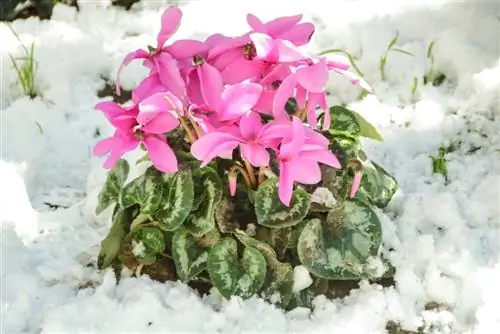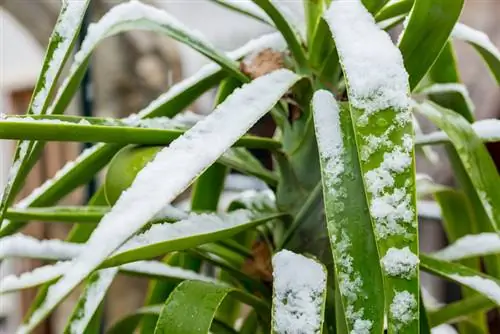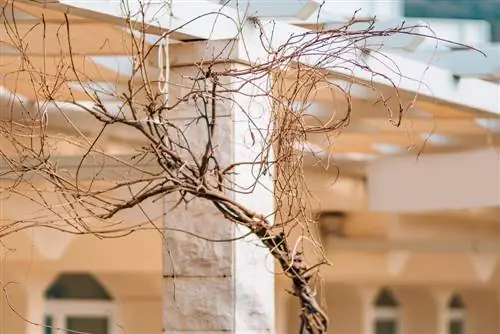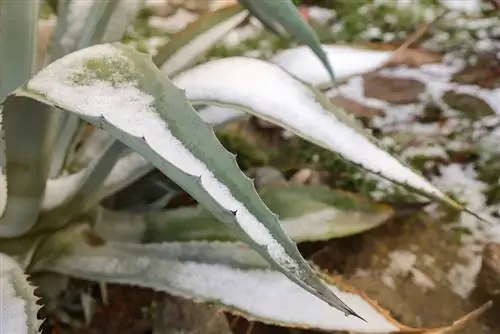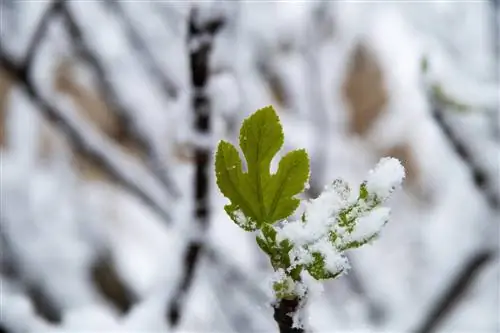- Author admin [email protected].
- Public 2023-12-16 16:46.
- Last modified 2025-01-23 11:22.
There are more than 20 different species of cyclamen, some of which are even hardy and suitable for the garden. But what do you do when the pretty flowers are frozen? Can they be saved for next season?
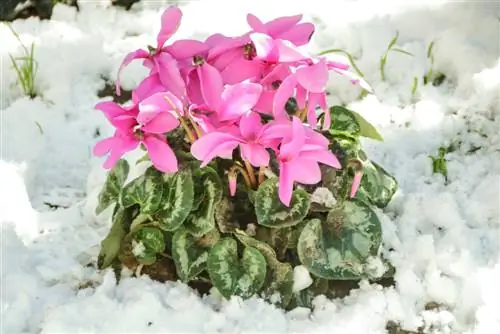
Can you save a frozen cyclamen?
A frostbitten cyclamen can be saved if the tuber is intact. Cut off dead parts of the plant and observe in spring whether the plant sprouts again. Choose hardy species such as Cyclamen coum, Cyclamen purpurascens or Cyclamen hederifolium to avoid frost damage.
Is my cyclamen frozen?
Whether your cyclamen has actually frozen depends on various factors:
- What type of cyclamen is it?
- Where did the cyclamen overwinter?
- How cold was it at the wintering site?
- Was the ground frozen?
Some types of cyclamen, the so-called garden cyclamen, are hardy down to around minus 25 °C and do not freeze to death so quickly, even in deep frost. These variants sprout again quickly in spring and bloom in summer or autumn. The winter-flowering species, on the other hand, are not sufficiently hardy and should only be placed outside in summer. So your cyclamen may have frozen if
- it is a non-hardy species
- the plant seems to dry out after a cold snap
- a hardy species does not sprout again in spring.
How can I save a frozen cyclamen?
Whether you can save the frozen cyclamen depends on the condition of the tuber. If only the above-ground parts of the plant have fallen victim to frost, cut them off. Over the course of spring you will see whether the plant sprouts again. However, if the tuber is also frozen solid, rescue is usually not possible. Then the only solution is to plant new cyclamen, and you should use species that are actually hardy.
Which cyclamens are hardy?
Of the 22 species of cyclamen, only these are really hardy and can tolerate frosts down to minus 25 °C:
- Early spring cyclamen (Cyclamen coum): is planted in autumn, blooms between February and March
- Summer cyclamen or European cyclamen (Cyclamen purpurascens): only species native to the Alps, namesake of the plant genus, blooms between July and August
- Autumn cyclamen or ivy-leaved cyclamen (Cyclamen hederifolium): blooms between August and October, leaves only emerge after flowering
You can plant these species in the garden without worry. However, all other species that can tolerate a maximum of minus five degrees Celsius and are therefore quickly frozen in a winter cold snap are not suitable - these can only be saved if the tuber remains intact.
In particular, the winter-flowering indoor cyclamen (Cyclamen persicum) should only be kept indoors. In summer this species should “oversummer”, i.e. h take a rest period. The plant then flowers again.
Tip
Location for the indoor cyclamen
Although the indoor cyclamen cannot tolerate frost, it still prefers a rather cool location. A room window facing east or north is ideal with a room temperature of a maximum of 16 °C.
- Garden cyclamens are hardy down to minus 25 °C and are very robust.
- You still need some winter protection in the form of a sheltered location and a cover with brushwood.
- The tuber in particular must be protected from frost.
- If the tuber remains intact, the plant will sprout again and again.
- However, most cyclamens are not hardy and therefore have to overwinter indoors.

